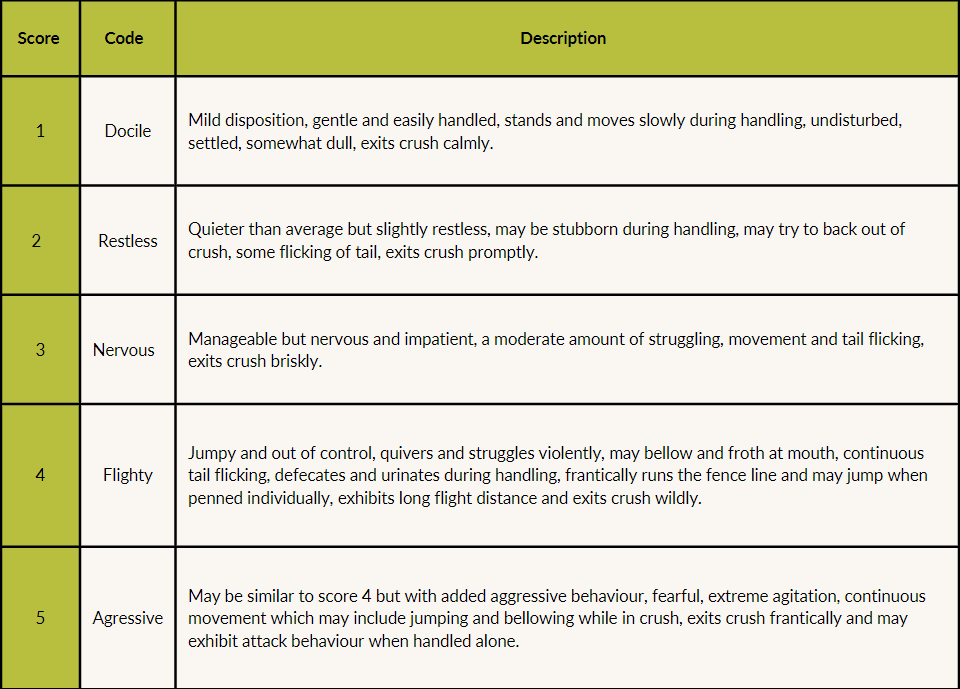Docility in cattle is the way animals behave when being handled by humans or put in an unusual environment such as being
separated from the mob in a small yard. What we define as poor docility is a survival trait in the wild – fear of anything
unusual and the desire to escape. In domesticated cattle it is exhibited as “flightiness”. Importantly, docility is a highly
heritable trait and can be improved genetically.
breeding programs.More docile animals (i.e. better temperament) can lead to improved ease of handling, better performance and increased safety for those handling stock.
Aberdeen Angus with consistently better temperament is a desirable trait that can be selected for and used as a marketing tool.
Docility EBVs are estimates of genetic differences between animals in temperament. Docility EBVs are calculated from docility scores recorded on animals when the animals are between 60 and 400 days of age.
- There needs to be some variation in the scores for them to be used effectively by the BREEDPLAN analysis. That is, scoring all animals in a group with a docility score of 1 will not identify any genetic differences in docility.
- BREEDPLAN can accept half scores if animals exhibit behaviour which is intermediate to the above scores.
- Animals should be assigned a different management group if they have had a different level of handling prior to scoring.
- The method of scoring used (i.e. crush or yard) should be specified when submitting the docility scores.
- When recording docility, it is important that both a consistent scoring method is used and the same person scores all animals that are being assessed in the herd on that particular day.
How do I submit docility scores?
Docility scores should be submitted directly to your Pedigree Cattle Services using any of the following methods:
- The BREEDPLAN paper performance recording forms are available to download at www.aberdeen-angus.co.uk/docility-recording
- The BREEDPLAN compatible Microsoft Excel templates are available to download at www.aberdeen-angus.co.uk/docility-recording
- A BREEDPLAN compatible herd recording computer program.
For more information regarding how to record docility scores or docility EBVs in general, please have a look on our website at www.aberdeen-angus.co.uk/docility-scoring.
How do I record docility scores?
Docility EBVs are calculated from temperament scores recorded on animals when they are between 60 and 400 days of age. The recommended time of scoring is at weaning or shortly afterwards. As an animals temperament relates strongly to previous handling experiences (positive and/or negative) and handling frequency, it is best to record docility scores before too much human interaction has occurred. Scoring docility at weaning has the additional advantage of minimising variation in handling between animals to be scored.
Animals can be scored for temperament using either a yard or crush test :
Yard Test : The calves are individually put into a small square yard and the handler should attempt to hold the animal in one corner for ~30 seconds.
Crush Test : The calves are put up a race and individually held in the crush for ~30 seconds.

